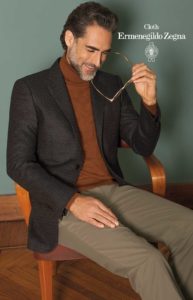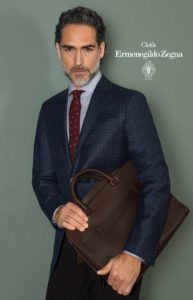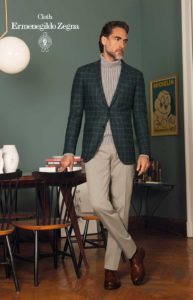Nobody wants to be the guy walking into work in what should be business casual attire, but is getting all the wrong looks. Knowing where the line is between business casual and casual can be challenging, and there’s going to be a lot of variance depending on your office environment.
Let’s take a closer look at what exactly business casual means, so you always walk into the room looking and feeling like you own it.
What is Business Casual?
Every business has its own definition, but we believe the definition of business casual leans more toward the “business” rather than the “casual”. Business casual isn’t just throwing on a pair of jeans and calling it a day. There are certain nuances to mastering this look, without compromising your professionalism.
Know Your Company’s Definition of Business Casual
Whatever you do, don’t just walk into your workplace assuming you know what the HR guy meant by business casual. Every company has its own definition, and some are stricter than others.
Aside from knowing the dress code like the back of your hand, it also helps to get a sense of what the people around you are wearing. Look at your co-workers—especially those you consider competition—to get a feel for the acceptable styles, especially executives. Emulate their look, and then make the style your own.
From Collar to Soles: Get to Know Business Casual Attire
 Fit
Fit
The modern business casual look leans towards trim fitting ensembles. Since business casual frequently meshes outfits that are not complete matching sets, seeing a custom clothier is a worthwhile time-saver. Avoid the department store hop, and instead talk to a custom clothier about getting exactly what you want for your custom wardrobe, in exactly the size you need… that fits right every time.
Fabrics
With business formal attire, you’re probably used to the standard blends for jackets and shirts, but business casual opens the door to a lot of other interesting options. In the winter months, you can experiment with solid colored wool pants and well-tailored corduroy jackets as standout additions to the fall wardrobe.
That’s right, guys, even corduroy is on the table.
Wool
Warm and insulative, yet breathable, wool isn’t just something to don for the winter months. The look is timeless, and goes seamlessly from business casual to more formal attire.
Whether it’s a handmade wool cardigan or a carefully tailored pair of wool pants, wool adds a touch of texture and classic refinement to any business casual ensemble.
Corduroy
Feared by many for its bold texture, corduroy isn’t the first fabric many businessmen reach for, but it has a warm appeal that speaks to a vintage, scholarly look.
Though ideal for cooler months because of its thickness, corduroy jackets and pants work with a variety of shirt ensembles. Just be sure to pair corduroy with a muted pattern or solid shirt, so as not to overwhelm the look.
Knitted
Business casual attire opens the door to bring sweaters into the office, and the look is effortlessly attractive when paired with the right dress shirt and pants. Don’t be afraid to swap your jacket for a heavy knitted cardigan, or your dress shirt with a thin sweater.
Gingham
Gingham is a medium-weight cotton fabric that is light, comfortable, and incredibly breathable. It’s most often sold in checked or striped patterns, and is a popular choice for patterned men’s business casual shirts. Pair it with a solid colored jacket in a complementary tone for a bold, stylish, stand-out look in the office.
Tweed
Tweed is a durable, moisture-resistant fabric reminiscent of the days of pipe tobacco and wool fedoras. Rough to the touch, tweed is comprised of wool fibers, sometimes dyed to create varying patterns in the fabric.
Tweed was in high fashion in the early 1900s in Britain, and saw a rise in popularity in the United States in the 1960s, and has once again risen back into fashion. Add a vintage, dapper twist to your business casual attire, and bring a tweed jacket into the mix to really shake things up.
Denim
While the jury is still out in some office settings as to the appropriateness of denim for business attire, it’s a staple of the wardrobe.
When pairing denim with business casual attire, always wear dark washes, and ensure that the hem of the pant leg falls appropriately at the laces of your shoes. There’s nothing quite like a perfectly tailored pair of jeans with a killer sport coat to bring together a bold business casual look.
Color Coordination
 One of the most challenging parts of getting the business casual look right for men is color coordination. It may sound odd, but business casual is actually more difficult to coordinate. With a suit ensemble, completing the look is the relatively simple task of selecting a shirt and tie, but without a matching jacket and pants, there’s a lot left to figure out on your own.
One of the most challenging parts of getting the business casual look right for men is color coordination. It may sound odd, but business casual is actually more difficult to coordinate. With a suit ensemble, completing the look is the relatively simple task of selecting a shirt and tie, but without a matching jacket and pants, there’s a lot left to figure out on your own.
Generally speaking, you want to keep colors muted and neutral, and only employ one vivid color, such as red or blue, with an outfit to avoid creating a loud, overwhelming look. Matching tones are more important than coordinating exact shades, so work within color groups to keep your look fresh and tie it all together.
Cool Tones
One thing that’s incredibly helpful with identifying how well a set of colors coordinates is by pinpointing their tone on the color wheel. A custom clothier can assist you with this process.
Cool tones are going to have bluish undertones. Examples include blues, greens, and purples. These colors typically complement fair complexions with pink undertones.
Warm Tones
Warm tones are colors that fall into the reds, oranges, and yellows range. These are often deep jewel tones that complement darker and olive complexions.
How to Master Business Casual Attire
Jackets
Perhaps the most notable difference between business casual and business formal attire is that you have many options in matching you jacket with trousers. While you still need to coordinate your ensemble, you’re not limited to the same color or print.
The jacket brings the whole outfit together, so make sure the shoulders are properly fitted, and the color coordinates well with everything from your dress shirt to your shoes.
As business casual gets continually refined, men are trying other options outside of the conventional jacket or blazer, including trim-fitting sweaters and cardigans. The look is incredibly versatile, and very striking with the right color coordination.
Shirts
Both solid and patterned shirts work with a business casual outfit, so long as the rest of the outfit is somewhat muted. Be bold with patterns, but always wear them in moderation for the best overall effect.
Don’t forget the buttons when selecting a shirt. Since ties are completely optional with business casual, the buttons on your shirt will be visible without a tie. And, for the more adventurous, manufacturers have really stepped up the button options. Have fun, but be careful.
If you wear cut-away collared shirts, keep in mind they don’t look particularly good without a tie, so you may need to diversify your collection to bring your look over to business casual.
Aside from collared shirts, you can also sport a thin sweater or crisp t-shirt under your blazer. Keep in mind that if you take your jacket off, you’re going to be walking around in slacks and a t-shirt – a little foresight is critical with this look.
Pants
Business casual is about comfort meeting style. In some offices, jeans may be acceptable. If that’s the case with your company, make sure you always select dark wash denim, well cut, and damage-free (destroyed denim, trendy though it may be, still has no place in the office environment).
Alternatively, khakis and chinos are more than acceptable, and look great with the right jacket pairing. Make sure yours are well fitted, and be careful to follow the typical rules of where the bottom of your pants should fall (just to your shoelaces).
Shoes
The smart approach when it comes to shoes is with softer colors like browns and greys, and diversify your styles. Loafers, oxfords, and even dress boots work great with a variety of ensembles.
Materials also have a lot of play here. While brown leather is always a striking look, we’re seeing more suede shoes, and even gray loafers, make their debut onto the business casual scene.
Accessories
 What you wear with what you wear is every bit as important as the blazer that brings it all together. Get creative with textures a bit more with your business casual accessories. Scarves are a welcome alternative to ties in the appropriate weather, and vintage leather messenger bags make for laptop cases with a bit more personality.
What you wear with what you wear is every bit as important as the blazer that brings it all together. Get creative with textures a bit more with your business casual accessories. Scarves are a welcome alternative to ties in the appropriate weather, and vintage leather messenger bags make for laptop cases with a bit more personality.
Bolder personalities even incorporate suspenders and hats into the mix, bringing back vintage looks with wool fedoras and the look of the well-groomed mid-century businessman.
Custom Clothing Makes Business Casual Easy
Business casual is most often a struggle for men because it requires a kind of creative coordination that they typically don’t have to engage in with a suit.
For those who believe that what you wear is a critical part of your overall success, building your business casual closet with a custom clothier will give you quality clothes that fit perfectly. There’s only so much that tailoring can fix, and coordinating the colors of your business casual attire is absolutely crucial to pulling the look off. Our advice? Skip the frustrating department store shuffle, and talk to a custom clothier about getting all of the right pieces for your business casual wardrobe.

 Fit
Fit
Recent Comments